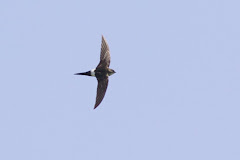And so, after just over 3 years in Denmark, the inevitable news that every diplomatic couple receives, has arrived - that of our next posting. Last week Libby and I heard that we will be leaving Denmark and moving to Beijing at the end of August. It's a 11-month posting, after which we will almost certainly return to the UK.
I have to say that I have mixed feelings. Living in China for a year is, I know, going to be an amazing experience - it is probably now the second largest economy in the world (almost certainly overtaking Japan in 2009) and, if it continues its amazing growth, it will overtake the US as the number one in the next 20-30 years or so. The challenges associated with this growth, particularly for the environment, are of a scale that is almost incomprehensible to me, coming from a small island in the Atlantic of only 60 million people! China has an incredible 1.3 billion people (22 million in Beijing alone), many of whom aspire to the western lifestyle - a car, flatscreen TV, i-phone etc. Of course they have an absolute right to develop so the priority must be to find a way to help them to do it sustainably whilst at the same time reducing the impact our lifestyles in the west have on the planet to make room. I hope I can contribute in some small way while I am there.
It will be a completely different experience to living in Copenhagen. The cultural experience will be hugely rich - the people, their habits, the food, the city life will all be a change from the comfortable western European existence we have been treated to here. And the birds?! Oh, the birds will be very different.. probably not much on my doorstep except a few House Sparrows and maybe some Azure Magpies but with Beidaihe and Happy Island only around 3 hours away by train, I will be in for a treat at migration time. And I will hopefully be able to travel around a bit and get to grips with many of the 'sibes' that cause so much excitement when they turn up in western Europe - Pallas's Warblers, Yellow-broweds, Siberian Thrush, Red-flanked Bluetail, Siberian Rubythroat, Radde's Warbler, Amur Falcon etc etc...
However, as much as I am looking forward to the new adventure, I am also very sad to be leaving Denmark. We have both thoroughly enjoyed our time here. Copenhagen is a lovely city and the quality of life here is very high - public transport that works, amazing cycling infrastructure, quality food and, best of all, the people. We have found the Danes to be very friendly, helpful, modest, relaxed, well-educated and with a very similar sense of humour to us Brits. We have made some very good friends here (Kat, Michael, Kamilla, Mike, Barbara etc) with whom, I am sure, we will stay in touch for many years to come. The Scandinavian social model of relatively high taxes and a great welfare state lends itself to a happier and much more equal society than we are used to in the UK. My experience of doctors and dentists in Copenhagen is way beyond that of the UK and it appears that education is much less determined by your postcode. I know there are pressures and tensions here with some questioning the sustainability of this model, especially linked to immigration and to 'brain-drain' but, for me, it would be incredibly sad to see this model eroded - it is as close to utopia as I have seen!
On the birding front I have had a great time. I have so far seen 246 species in Denmark (will I reach 250 before I leave??), the vast majority of which have been seen locally using public transport or, most frequently, by bicycle. My favourite sites around Sydvestpynten, Kongelunden and Vestamager are fantastically varied habitats that Copenhageners are very lucky to have on their doorstep. And I have been able to get to grips with many species that are very scarce or rare in the UK - Marsh Warbler, Icterine Warbler, Rosefinch, Rough-legged Buzzard, Honey Buzzard, Wood Warbler, Red-breasted Flycatcher, Lesser White-fronted Goose, Black Kite to name a few. The birders here are very competent (dare I say, better than the UK on average?) and I have very much enjoyed meeting and talking to many in the Danish birding community - special mention must go to Henrik Højholm who has shown me some of the best sites (and birds), including Skagen, and there are many others - Stefan Sturup, Steffen Nielsen, Klaus Nellevang, Ole Nyegaard, Jan Speierman, Andreas Petersen, Thomas Hellesen, Andreas Hagerman, Morten Christensen, Sanne Busk, Jimmy 'Skat' Hansen, Morten Kofoed-Hansen, Stig Kjaergaard Rasmussen, Tim Andersen, Ib Jensen, Rolf Christensen, Klaus Malling Olsen, Frank Desting to name a few (not forgetting the other 'Brits' here - Mark Walker, Brian Edwards and David Collinge plus Phil Benstead over the bridge in Sweden). A big thank you to all of you for being so generous with your time, knowledge and using your excellent english to help me improve my Danish birding experience! If any of you are in Beijing in the next 12 months (or the UK after that), look me up!
Of course, this blog will continue until I leave and I hope to be able to blog in some form or another from Beijing.
This feels a little like a premature leaving blog post but hopefully I will be able to say some goodbyes in person before the end of August. In the meantime, happy birding!































